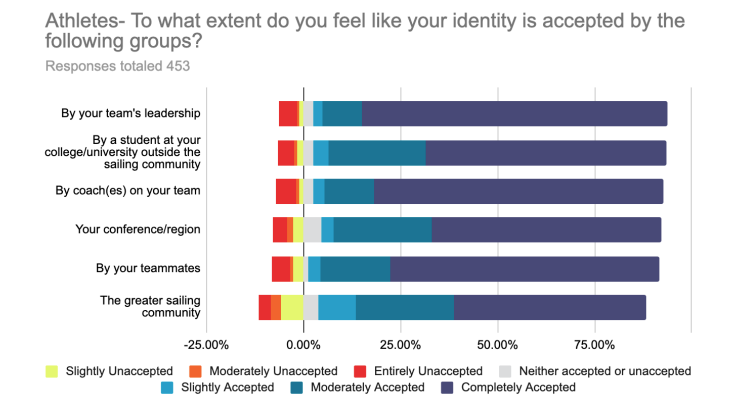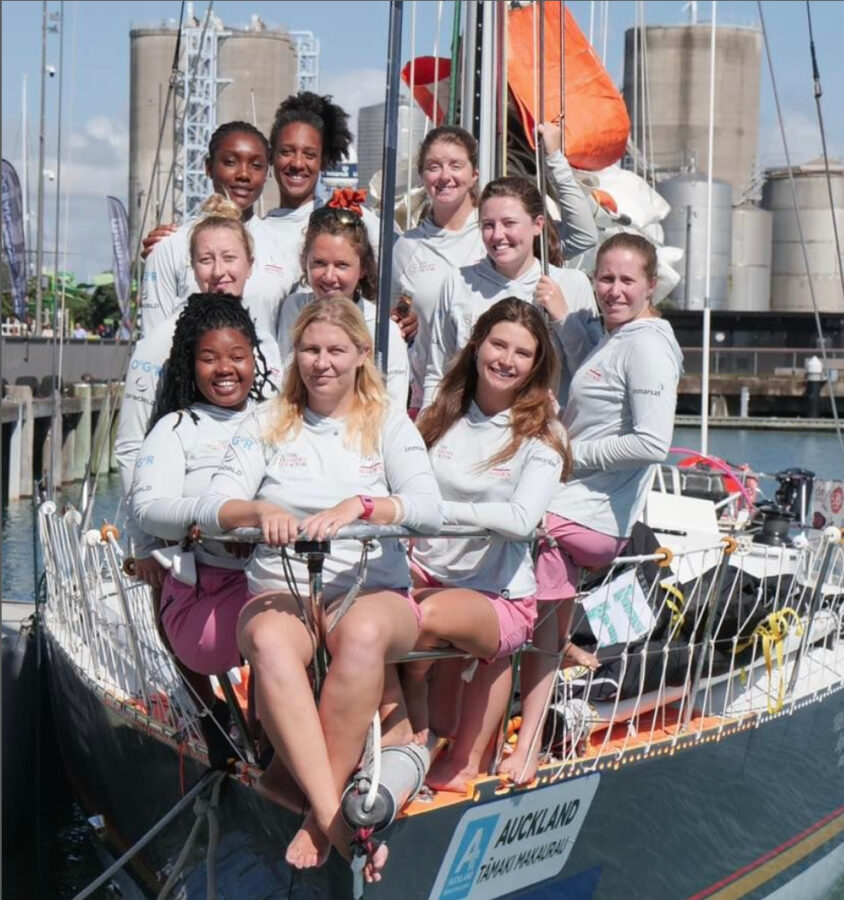
Examining the Current Culture and Demographics of College Sailing
In July 2021, we reported on an examination of diversity and inclusion in collegiate sailing. The initial survey was conducted by the Intercollegiate Sailing Association (ICSA), which formed the Inclusivity, Diversity, and Equity Task Force (TIDE). Its mission was to explore the stereotypes and assumptions around sailing demographics, and to track future cultural and demographic changes within the sport competitively.
That first TIDE survey examined the data received from a total of 1,086 athlete responses and 63 coach responses. According the the data, “Women are no longer an underrepresented gender, despite enduring discrimination. Of the survey participants, 56% identified as women, 42.2% identified as men, and less than 1% identified as non-binary.” And although women reported that they still faced discrimination, the numbers revealed other truly underrepresented groups.
The most recent survey, conducted in February 2023 (the results of which have only recently been released), assessed responses from 46 coaches and 551 athletes. Although this is a significant drop in the number of participants from those quoted in the previous report, we scanned through the tables to see what this group had to say about inclusivity and diversity in collegiate sailing.
The survey opened with a few basic questions about how participants were introduced to sailing and then racing. Just shy of 50% said they learned to sail before the age of 9, and a little less than half reported having been introduced to the sport by a family member. This was followed by yacht club and community sailing programs.
TIDE’s committee says it aims to develop a “welcoming and inclusive culture for College Sailing.” The survey is one way in which they measure the success of their initiatives toward making the sport welcoming to people of all backgrounds and skill levels. As the survey moved into the deeper questions, participants were asked to respond to direct questions in which they could share their personal experiences.
Two responses that stood out for us were, “As a sailor without any prior experience, my joining of the team deeply upset the members of my team and I was treated both on the water and off the water with negativity. Among some of the instances I was harassed and demeaned by a multitude of sailors,” and another in which a “self-identified ‘new racing’ sailor expressed frustration that they had not been placed on their team’s roster for racing opportunities, despite good attendance.”
In one question, athletes were asked “what parts of their identity impacted their feeling of acceptance. Popular responses included gender, age, sexuality, race, ethnicity, disability, socio-economic status, and sailing experience.” The graph below suggests the majority of sailors feel accepted in all the listed situations. But what are the demographics of those who participated in the survey?

According to the question on racial identity, of those athletes who responded, 82% identify as white or Caucasian, with the remainder responding as Asian (including Middle Eastern), Black or African American, Native American or Indigenous, Native Hawaiian or Other Pacific Islander, and 6% identifying with two or more races. A similar distribution was quoted among the participating coaches. One difference we did spot in the survey report was that 10% of athletes shared that they are Hispanic or Latinx, in contrast to the 2020 iteration of the survey in which 5% of athletes shared that they were Hispanic or Latinx. This is all quite subjective, as the report also states that in the latest survey the corresponding question had been changed to request a “Yes” or “No” answer: “Are you of Hispanic or Latino/a origin?”
In a nutshell, the survey delved into many aspects of culture, race, gender, sexuality, socioeconomic status — it even looked at positions respondents hold on a boat and how that might be affected by their identification within any of the categories. Derogatory language was also on the table; as you can imagine, more than a few of the respondents reported having heard derogatory language. While it does appear to be more common at a regatta or team event, the most common use was reported in relation to “Sexism/Gender.”

We’re not here to judge, but from our overview of the report it seems we have a good deal to learn and implement if we want our sport to grow and evolve from what one sailor recalled hearing often during their early days on the water: “male, pale and stale.” We’re not here to judge, but we can see how that phrase might have come about.
To get the full picture, not just our very brief overview, which to be honest, in itself can be biased because we’ve highlighted only a small number of facts that stood out for this writer. Someone else reading the report may find opposing information. So we encourage you to take a look and determine for yourself what shape collegiate sailing is in, and what it needs (if anything) to improve. Again, this report focuses on collegiate sailing, but it is still somewhat representative of the sport as a whole and can serve to give an overview of where we’re at, in relation to where we can be in the future.
Read the full report here.
You can also access the previous report here.
